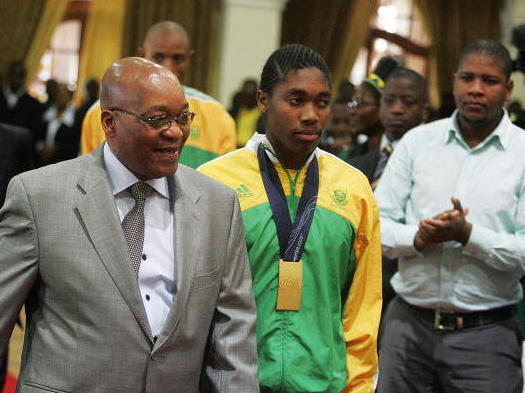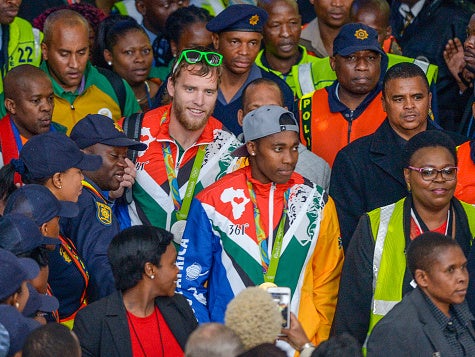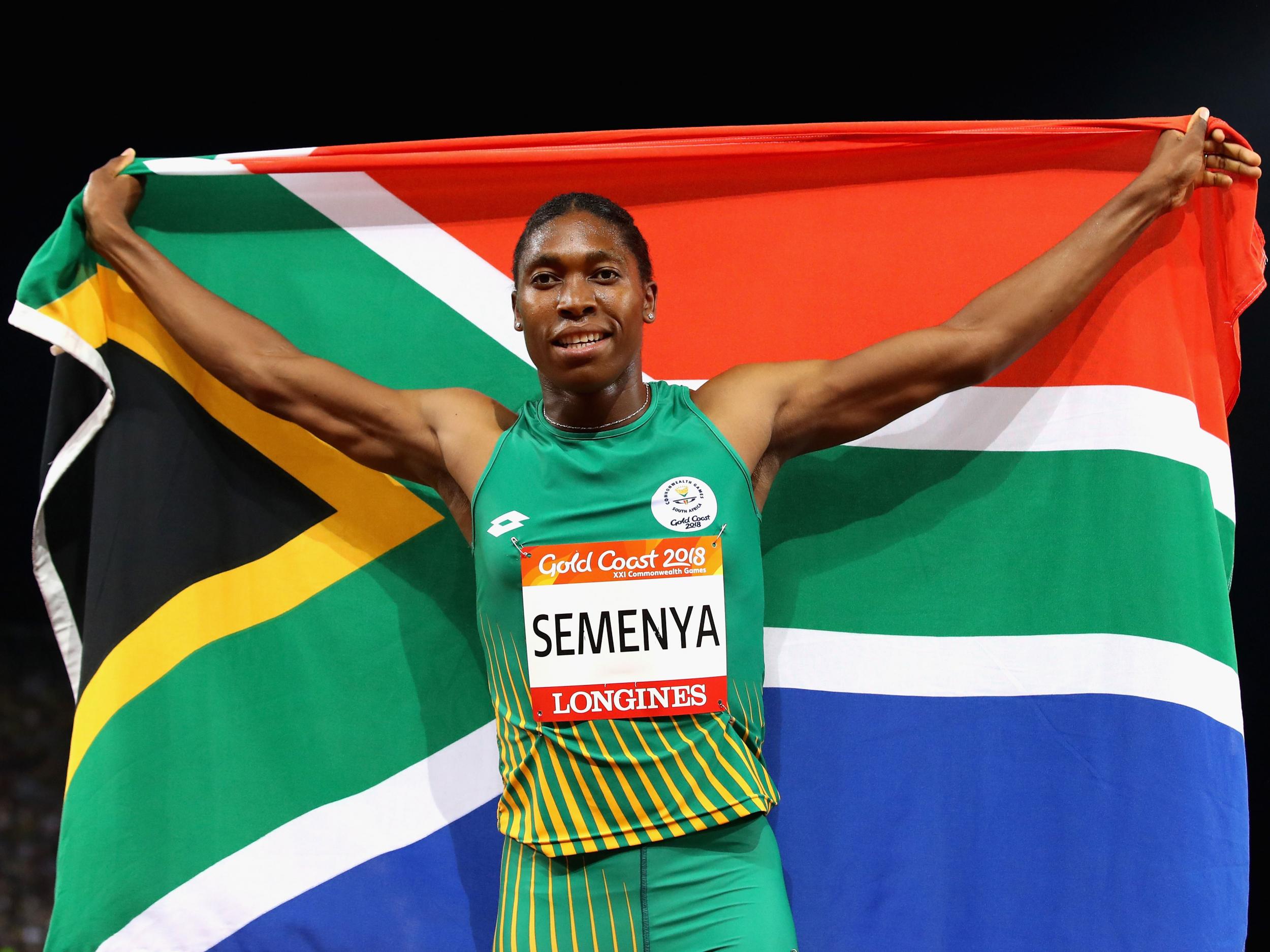Caster Semenya: Athletics has been trying to sabotage her for a decade. It may finally have succeeded
COLUMN: One of the greatest middle-distance runners of our generation is being sacrificed, in real time and before our eyes, in the pursuit of a mythical idea of womanhood
On 17 August 2009, Caster Semenya won her semi-final in the 800 metres at the World Athletics Championships in Berlin.
On her way back to the changing rooms, a fleet-footed interviewer from German television blocked her path. With the cameras running, he asked her: “Your career has boosted, and with that has come rumours. I heard one that you were born a man. What do you have to say about stuff like that?”
The following day, a rest day, Semenya was forced to undergo gender verification testing, under the orders of the International Association of Athletics Federations. Naturally, this was supposed to take place in secret. But the following evening, three hours before Semenya was due to race in the final, the news was leaked, in circumstances that remain mysterious. Semenya ran the race amid an erupting media volcano and won the gold medal by more than two seconds.
Naturally, Semenya’s beaten rivals took their defeat with magnanimity and good grace.
“These kind of people should not run with us,” said Elisa Cusma of Italy, who came sixth. “For me, she is not a woman. She is a man."
Mariya Savinova of Russia, who finished fifth, was even more dismissive. “Just look at her,” she said.
In a way, this was merely the public articulation of something many had been discussing in private since the start of the championships. But one thing was clear. The moment of Semenya’s greatest triumph had been obliterated; supplanted by a maelstrom of hostility and outrage, of prejudice and ignorance and blithe human cruelty. Semenya was only 18 years old, but from the moment she appeared on the scene, the sport of athletics took one look at her and hardened its resolve behind one insoluble objective: whatever the cost, she had to be stopped.
---
It took almost a decade, but athletics may finally have managed it. On Wednesday, the Court of Arbitration for Sport in Lausanne ruled in favour of the IAAF’s new rules banning athletes like Semenya from competing unless they take chemical suppressants to reduce their natural levels of testosterone. Semenya, now a double Olympic champion and three-time world champion at 800m, argued that the regulations were discriminatory. Cas agreed. And then decided it didn’t care. It ruled that the IAAF’s stipulations were “necessary” to ensure fair competition.

Semenya and her legal team aren’t the only ones dismayed at this. The World Medical Association, which represents doctors worldwide, urged its members to “take no part” in implementing the new regulations by administering hormone therapy to perfectly healthy athletes. “We have strong reservations about the ethical validity of these regulations,” the WMA president Leonid Eidelman said. “They are based on weak evidence from a single study, which is currently being widely debated by the scientific community.”
But then, what would scientists know about science. And perhaps the most horrifying aspect of the Cas case is how all sorts of supposedly unambiguous terms and concepts – “science”, “rights”, “fairness”, “level playing field” – have been subverted and distorted in the service of the real motivations for excluding Semenya from competition, which ultimately boil down to identity, cognitive bias and vested interest.
A lot of people will also tell you this case is “extremely complex”. It is. And it isn’t. The medical science behind whether athletes with “differences in sex development” enjoy an unfair advantage in sporting competition is exceptionally complex. So is the relationship between testosterone and athletic ability. Two humans with the same testosterone concentration can have wildly different outputs. Two humans with the same output can have wildly differing levels of testosterone. Anyone who tries to reduce athletic performance – in any sport – to testosterone levels alone is guilty not just of bad science, but very possibly bad faith.
But of course testosterone is relevant. If it weren’t, men’s running world records wouldn’t be around 10 per cent quicker than women’s at every distance. Which is why it’s all the more baffling that the IAAF regulations only cover events from the 400 metres to the mile. If Semenya wanted to switch to the 5,000 metres overnight – which is now one of her few options – she would be allowed to do so entirely uninhibited.

The IAAF argues that these events are the only ones for which sufficient evidence exists of an advantage attributable to testosterone levels. In fact, even this claim is dubious: the evidence for it rests on the one widely-discredited study mentioned above. (The sports scientist Ross Tucker has written far more extensively about the paper in question here.)
But even if you accept their rationale, a limited study of five events is the flimsiest of bases upon which to redefine the principles of an entire sport, and indeed principles that may well end up having repercussions well beyond the borders of athletics. As Tucker writes of the CAS panel: “The quality of the evidence just didn’t matter much to them, and we failed to convince them of it.”
A personal view is that Cas’s decision is both deeply conservative and politically expedient. Conservative because it is heavily biased towards tradition and the status quo, and insufficiently attuned to the incredible complexity of gender and gender identity: conceptually speaking, if separate male and female categories did not already exist in sport, there would be no persuasive case for instituting them in their current form.
And politically expedient because, initially at least, it affects only a tiny percentage of female athletes, and essentially has been engineered to affect just one. Semenya’s right to participate in elite sport – indeed, her entire career – has been thrown under the bus in the pursuit of a nebulous and highly subjective idea of ‘fairness’. The big question, to my mind, is why Semenya was considered to be so expendable.
---
This is why the initial treatment of Semenya in 2009 still matters. Athletics has been doing its best to sabotage Semenya’s career by whatever means for almost a decade. Whatever the veneer of justification now being deployed to exclude her, this was from the very start a witch-hunt in its most literal definition: a ruthless and dehumanising war against otherness, against non-normative ideas of what a female, and a female athlete, must look like.

From the very start, athletics didn’t quite know how to categorise Semenya, with her blackness, her muscular complexion, her deep voice, her proud lesbian identity, her jaw-dropping talent. Never mind that Semenya was already categorising herself perfectly adeptly – she’d never identified as anybody other than a woman, and here she was, entering herself in the women’s events: clue’s in the name! Her athletic gifts were described not in giddy, reverent terms as with many male athletes, but as a sinister threat, a scourge, a dangerous freakshow. This is a stigma with which many athletes of colour – the Williams sisters, say, or Simone Biles – have long been familiar.
Even today, in a society where gender binaries are being more widely challenged, wilful misidentification remains rife. Only this week, Fox News referred to Semenya as a ‘transgender’ athlete, which she isn’t. But it was slyly telling of how elements of the US far-right – depressingly allied with strands of radical feminist thinkers in the UK – are successfully folding the debate over DSD athletes like Semenya into a wider anti-trans agenda.
The upshot is that one of the greatest middle-distance runners of our generation is being sacrificed, in real time and before our eyes, in the pursuit of a mythical idea of womanhood. The Cas decision tramples over medical ethics, human rights, scientific rigour and basic dignity. And yet perhaps the last word here belongs not to a lawyer, or an administrator in a suit, but to an athlete: a female athlete, who only ever wanted to run as fast as she could.
“I am Mokgadi Caster Semenya,” she once wrote. “I am a woman, and I am fast.”
Join our commenting forum
Join thought-provoking conversations, follow other Independent readers and see their replies
Comments
Bookmark popover
Removed from bookmarks